WAIANAE MOUNTAINS, Hawaii - Some may say, "It's all in a hard day's work," but workdays are not so typical for Tia and Wicket.
Their job en-"tails" sniffing through some of Oahu's most beautiful forests looking for the Euglandina rosea (Rosy wolfsnail), a common predator of the endangered Achatinella, commonly known as the Oahu, or kahuli, tree snail.
Tia, a 3-year-old German Shepherd, and Wicket, a 6-year-old Black Labrador Retriever mix, are a part of the Oahu Army Natural Resource Program partnership with Working Dogs for Conservation.
The conservation is a non-profit organization, based in Montana, that trains scent-detection dogs to track the scents of endangered or invasive plants and animals.
"Over the past year, we've been conducting a pilot program to see if working dogs are able to detect the Rosy wolfsnail," said Kapua Kawelo, OANRP biologist, U.S. Army Garrison-Hawaii. "We're hoping that the dogs can aid our efforts in protecting the Oahu tree snail, while testing their ability to locate the Rosy wolfsnail."
Working dogs like Tia and Wicket use their keen sense of smell to detect endangered animals and plants around the world.
"Searching and locating the snails can be difficult, even for the dogs, because the Rosy wolfsnail doesn't give off a strong smell," said Alice Whitelaw, programs director, and Tia's handler with Working Dogs for Conservation. "Other environmental factors may also complicate the dog's ability, like rotting material, moisture, mold and other smells.
"Both dogs have located dozens of wild snails. Throughout their training, Tia has successfully located 375, and Wicket has located 422," Whitelaw said.
Tia and Wicket are two of eight dogs from Working Dogs for Conservation specially trained to locate certain smells.
"Once the dogs find their target smell, they are taught to sit and then are rewarded, linking the smell with the reward," Whitelaw said. "Tia's reward is a treat, and Wicket prefers her ball."
"The dogs that we work with are rare and valuable as we may find one out of 300 that show great potential as a working dog. About only 40 percent of those make it as a conservation detection dog," said Aimee Hurt, associate director and Wicket's handler, Working Dogs for Conservation.
"We search for possible working dogs that are high energy, reward- or toy-driven, and from a network of shelters from across the country," Hurt said.
"We knew conservation working dogs have been used on different types of endangered species projects, but to our knowledge, no one has ever tried to assess if dogs are feasible for tracking the Rosy wolfsnail," said Vince Costello, a rare snail conservation specialist with OANRP.
With the pilot study now complete, researchers have confirmed that dogs can detect the Rosy wolfsnail, and will re-evaluate and consider utilizing dogs for future conservation work.
"The Army, as a federal agency, is required to protect threatened and endangered species found on its installations," Kawelo said. "On Oahu, the Army is required to stabilize the population of the endangered Oahu tree snail, in eight locations across the Waianae Mountains, each location includes around 300 snails per population."
The Rosy wolfsnail is a cannibal snail that was first introduced to Hawaii in 1955 to eradicate the Giant African snail.
However, the Rosy wolfsnail traveled to higher elevations in the mountains of Oahu, where it discovered a new meal, the endangered Oahu tree snail, according to Costello.
"(This cannibal snail) feeds upon the Oahu tree snail, (eating) whole populations of the small snail." Costello said. "We were finding fewer and fewer Achatinella, and if we wouldn't have intervened by eradicating the Rosy wolfsnail in some of these areas, a whole population of Achatinella would have been gone."
In keeping up with efforts to protect the Oahu tree snail, OANRP builds snail exclosures, sets traps for rats that also graze on the Oahu tree snail, builds fences to keep out pigs and goats, and conducts invasive weed control.
The OANRP staff will continue to evaluate innovative methods of protecting the Oahu tree snail and Hawaii's natural resources, Kawelo said.


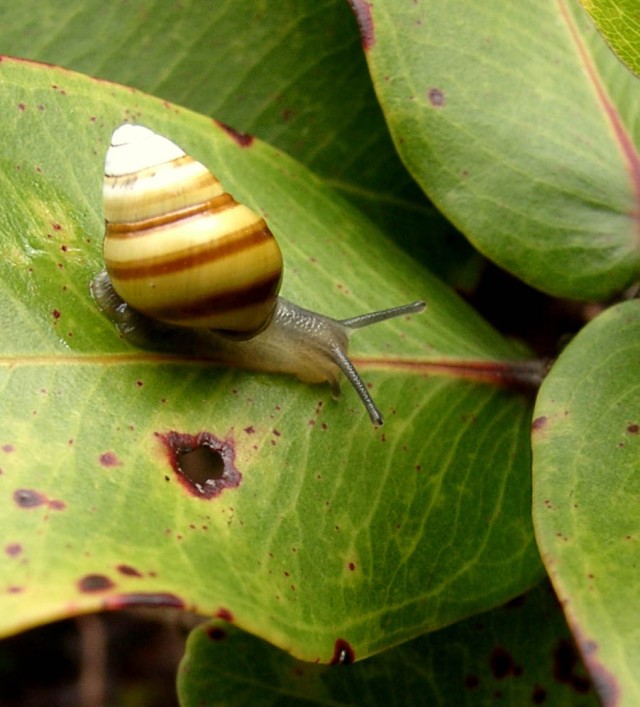
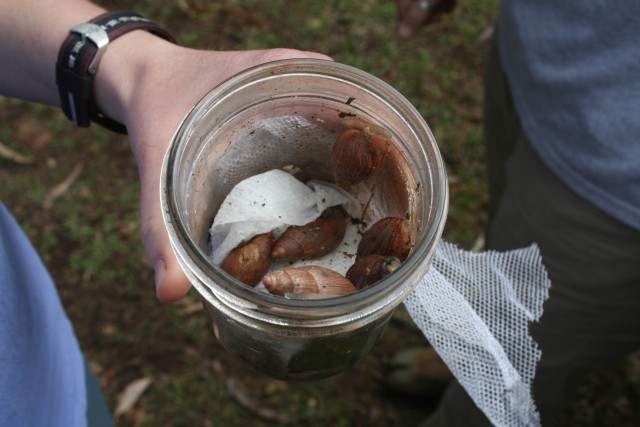

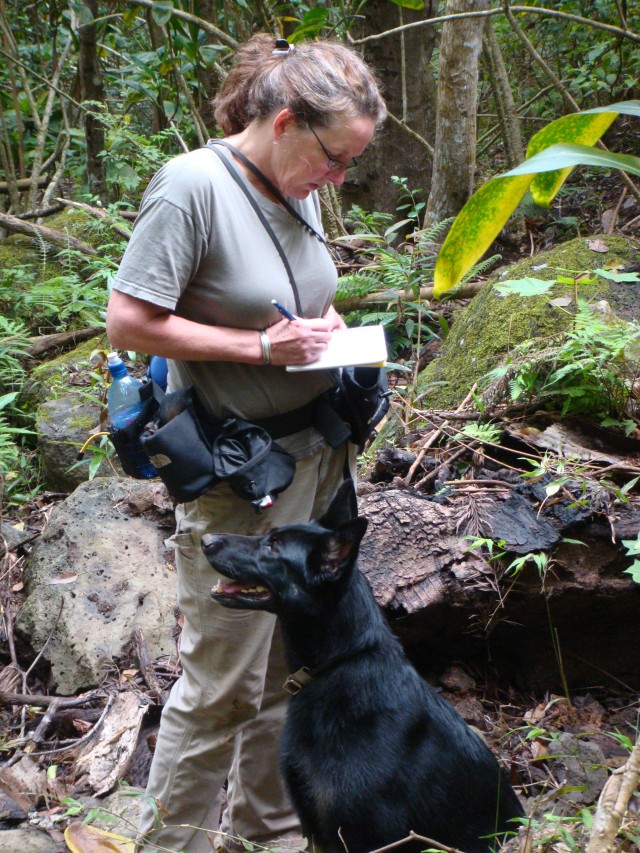
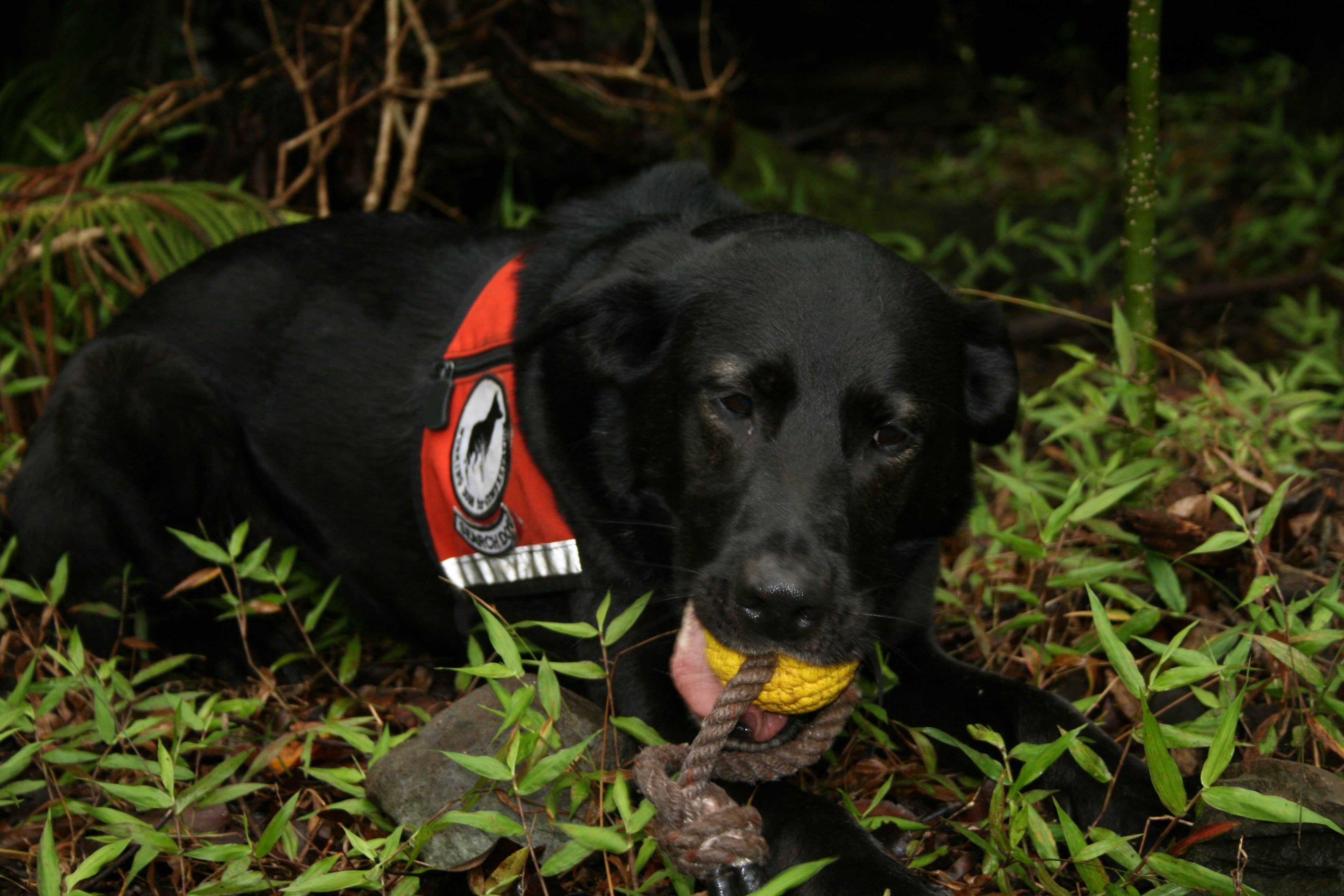


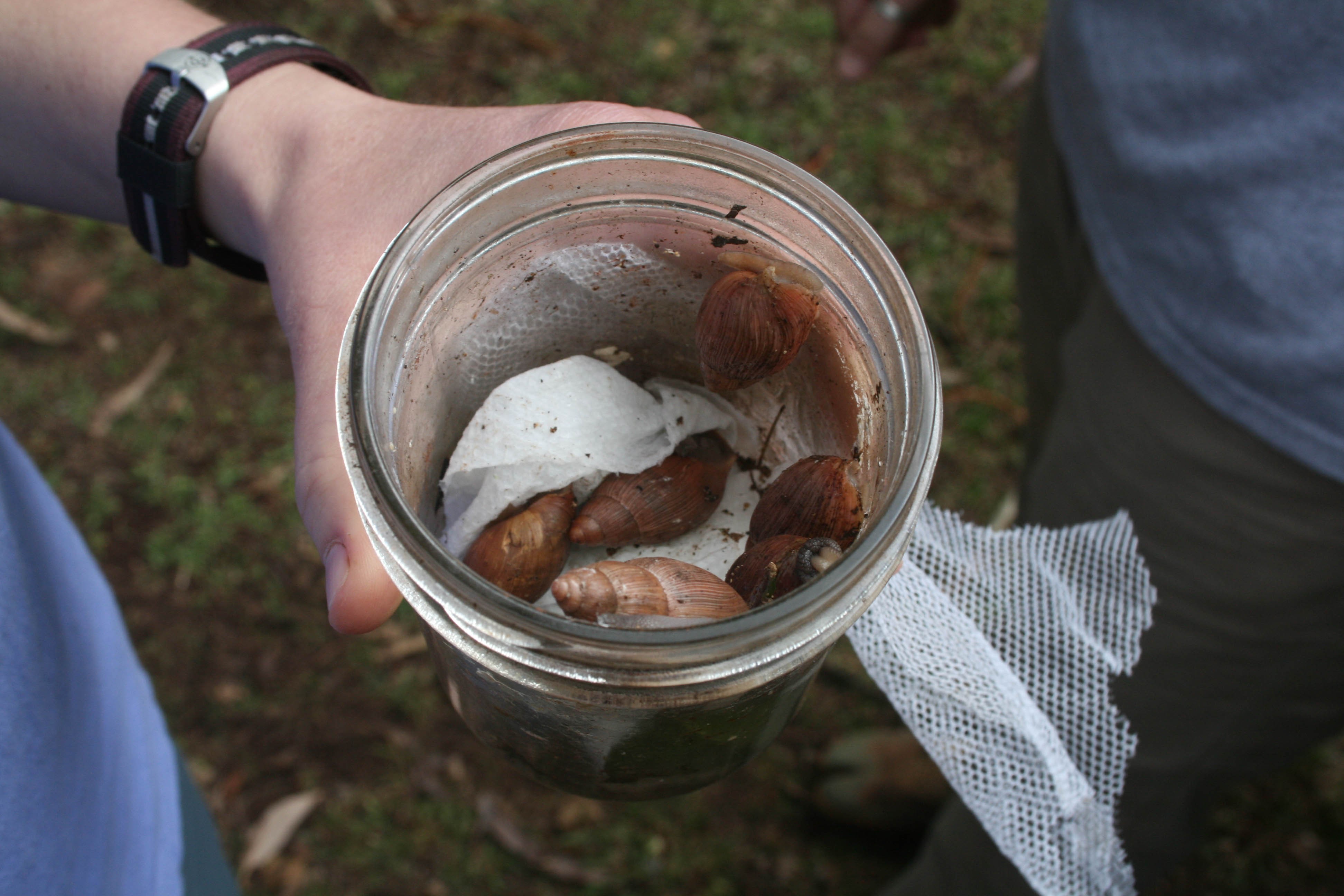

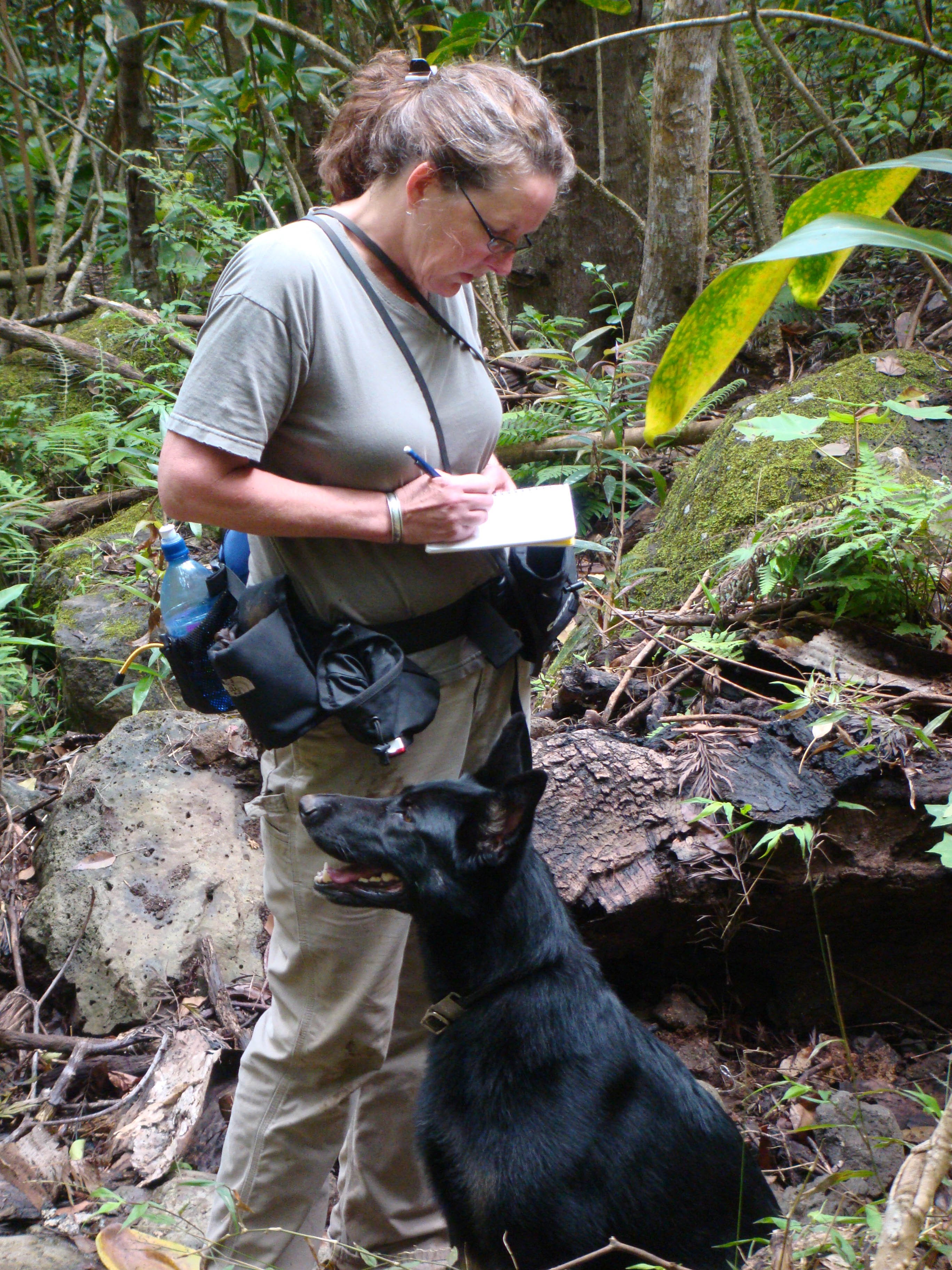
Social Sharing